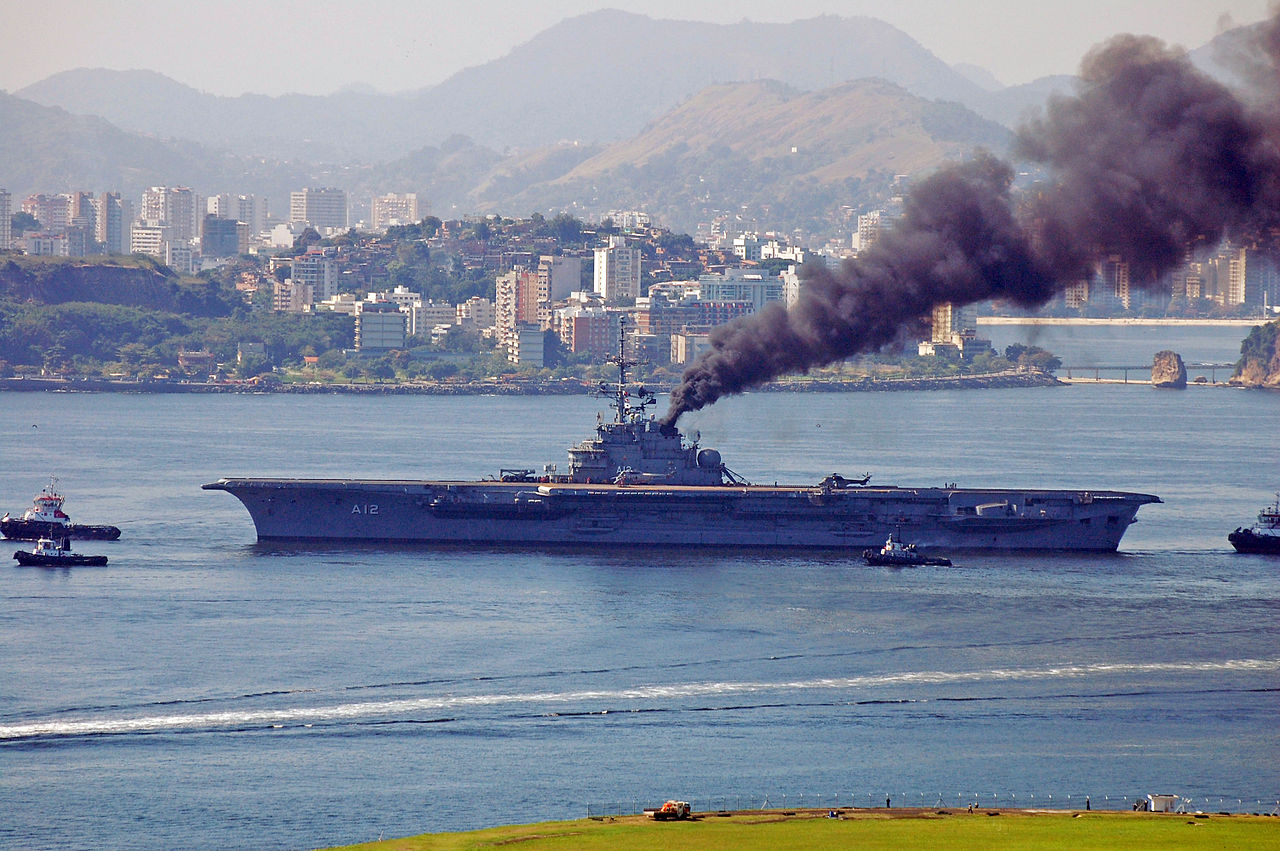The tug ALP Centre is towing the Brazilian aircraft carrier Sao Paulo, ex-Foch and sistership of the Clemenceau, on her last voyage. The convoy left Rio de Janeiro on August 4, crossed the Atlantic and is currently off the Western Sahara. It is heading to Aliaga, Türkiye, where it is expected to arrive around September 12. Brazil is sending a dirty gift to the Turkish working class community and to the Aegean Sea. The Sao Paulo is expected to be scrapped by the EU-approved Sök Denizcilik yard. Sök Denizcilik regularly receives navy vessels, particularly from the United Kingdom.
According to the inventory of hazardous materials on board the Clemenceau, the aircraft carrier Sao Paulo contains PCBs (polychlorinated biphenyls) in electric cable sheaths, paints, rubber gaskets, linoleum-type flooring, electronic cards, paint and hydrocarbon residues, thousands of mercury fluorescent tubes and fire detectors with radioactive microsources, batteries and hydrocarbon waste. As far as asbestos is concerned, on board the Sao Paulo there are at least 17.5 km of piping with asbestos insulation, 2.8 km of asbestos ventilation ducts, 2,380 m2 of insulating walls with sprayed asbestos, 3,920 m2 of asbestos mats in firewalls, 7,120 m2 of asbestos tiles and 44,000 m2 of asbestos paint. Before her dismantling in Hartlepool, United Kingdom, the Clemenceau had undergone partial asbestos removal. This is not the case of the Sao Paulo which was sent as is by the Brazilians to the Turkish yard Sök Denizcilik.
France has a share of responsibility in this trans-oceanic export of grey waste. Instead of dismantling the aircraft carrier Foch, France sold her to the Brazilian Navy in 2000. The Foch was on her last legs. Renamed NAeL Sao Paulo, she was to raise Brazil’s prestige as the only country in Latin America to own an aircraft carrier, and to be used to train the 23 Skyhawk fighter jets purchased in 1997. The NAeL Sao Paulo soon became entangled in repeated technical problems. In 2004, a boiler tube explosion and fire killed three sailors and injured seven others. In 2012, another fire killed one sailor and injured 2 others. The fire residues add to the long list of waste materials embedded in the ship’s hull and to her operational waste. Several attempts to upgrade the ship were undertaken, but the magnitude of the investment required eventually led to the final decommissioning of the aircraft carrier in 2017.
The sale of the Sao Paulo to the Sök Denizcilik yard had been announced in March 2021 (see “Shipbreaking”, the Robin des Bois bulletin of information and analysis on end-of-life ships, n° 64 p. 15). In the absence of ship dismantling yards in South America, Brazil is used to send its oil tankers and ore carriers to the Indian subcontinent for scrapping, not forgetting its previous aircraft carrier, the NAeL Minas Gerais (ex-Royal Navy HMS Vengeance) scrapped in Alang (India) in 2004.
After India, Bangladesh and Pakistan, Türkiye is the fourth importer of end-of-life ships to be scrapped.
Also read in “Shipbreaking” n°58 p. 7(February 2020) the article “Reefing or recycling for the Sao Paulo” and the exchanges of Robin des Bois with Sök Denizcilik yard.
 Imprimer cet article
Imprimer cet article










